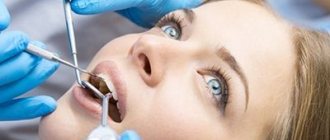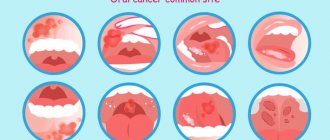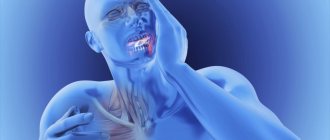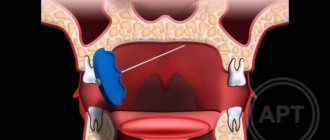Head on one side
Discomfort in the jaw is most often associated with problems in the temporomandibular joint, formed by the head of the lower jaw and the tubercle of the temporal bone, which, together with the articular disc, are enclosed in the articular capsule.
The movements in this joint are very complex: they are carried out not only by the masticatory muscle, but also by six other adjacent muscles. The movements of the lower jaw help us not only when eating, but also during conversation, laughter, and coughing. Related article Most patients with jaw dislocation are women
It is not surprising that the temporomandibular joint, according to medical observations, serves as the center of balance for the entire human body. With a symmetrical position of the lower jaw, the head muscles do not experience tension, and displacement of the lower jaw in any direction leads to an imbalance of the head. Problems in this area affect the muscles of the head, neck, temporomandibular joints, and cranial nerves and cause chronic pain on one side or, less commonly, on both sides of the face and head. Usually this condition has a very depressing effect on the patient; he completely “loses himself” and is unable to think about anything other than eliminating the pain.
Pain may appear in the morning, during the day or in the evening, this depends on the different types of joint damage and is important for the doctor to make a diagnosis.
Mouth shut. What to do if you have problems with your jaw joints
Read more
Types of neck and jaw pain
The neck may hurt on the left side under the jaw, or the pain occurs on the right or in the front and radiates to the back. The nature of pain can be very different, due to one or another reason for its occurrence. The nature of the pain is very important for making a diagnosis, so it is necessary to describe it to the doctor as accurately as possible.
Intense pain on the sides of the neck under the jaw
Most often, such pain occurs due to inflammation of the lymph nodes and tonsillitis. Both diseases are the result of an infection entering the body. Migraines and dental infections can also cause severe pain under the jaw.
It's a dull pain
If the pain is aching in nature, then it could be caused by a migraine, which, with bright light, changes in lighting or loud sounds, intensifies and concentrates in one place. Additionally, symptoms such as vomiting, nausea, vision problems and constant thirst may appear. Aching pain can also be associated with infectious dental diseases.
Pain under the jaw on the left
If your neck hurts on the left side under the jaw, then this may indicate almost any of the diseases that were listed above; Pain can also be associated with problems in the cardiovascular system. For example, pain on the left under the jaw appears with a heart attack or angina, which, as a rule, comes from pain in the chest area and is accompanied by acute pain in the teeth.
Pain when pressing
If your neck under your jaw begins to hurt when pressed or pressed, this may indicate inflammation of the lymph nodes, as well as diseases such as auricular ganglion neuralgia, osteogenic sarcoma, or the presence of sialoliths. Any painful sensations cannot be ignored. Even if discomfort in the neck and jaw does not cause any particular problems, this is not a reason to ignore it. Seeing a doctor in a timely manner is a decision that needs to be made immediately. Only a doctor can tell why your neck hurts under your jaw and what needs to be done about it.
To the dentist!
The cause of discomfort may also be due to incorrect position of the teeth. In this case, you will need the help of a maxillofacial dentist who will supply temporary or permanent splints and dentures that correct the incorrect position of the jaw.
Article on the topic
A tooth for a tooth: what happens if the jaws don’t close?
A rehabilitation doctor can help if the pain is caused by increased tone or tension of the masticatory muscles, limited mobility of the lower jaw, incoordination of contractions of the masticatory muscles, excessive mobility of the head of the lower jaw (sometimes this causes “clicking” in the temporomandibular joint).
Pain and clicking disappear after normalization of the function of the masticatory muscles and joint, except in cases where arthrosis deformans and inflammation in the joint are diagnosed. Then treatment should begin with following the recommendations of a rheumatologist and orthopedist.
Prevention
Any muscles, including facial ones, need to be kept in good shape. There are several simple but very effective exercises that will help strengthen your muscle corset. In addition, facial gymnastics contributes to the formation of correct diction and a beautiful voice.
- Exercise one. Slowly, open your mouth wide. And just as slowly close it. For visual learners, it is enough to remember what the Nutcracker looks like.
- Exercise two – moving the jaw forward, lips relaxed. Then we move the jaw left and right, trying to gradually draw a circle. A nice bonus is saying goodbye to your double chin.
The whole complex takes no more than 5-7 minutes. The result is strong muscles and no spasms in the cheekbones and jaw.
If you are concerned about involuntary contraction of your cheekbones, to eliminate risks, get examined by our specialists. You can make an appointment online on the clinic’s website. Or by number: +7 (812) 501-7-501, +7 (931) 322-0-955.
Attention - facial expressions!
After complex treatment, patients are recommended to use medicated mouth guards at night. They are made individually by the orthodontist. The pads reduce pain in the joint, an unpleasant feeling of heaviness, fatigue in the masticatory muscles, neck muscles, and normalize mouth opening.
In order to prevent this very annoying nuisance from happening again, you need to avoid active conversations while eating, an excited manner of speaking when a person does not notice what is happening with his facial expressions, as well as hypothermia, which can provoke inflammation in the joint, which makes him more prone to to incorrect movements, more vulnerable.
Why does jaw pain occur?
Read more
When I yawn my chin cramps
Age-related changes that occur in the chin and surrounding areas have a very negative impact on the overall perception of the face.
As a rule, any wrinkles and, in particular, deep creases or ptosis of tissue in the lower third of the face give it a mournful expression and make a person visually older by 3-5, and sometimes even 10 years. Moreover, a characteristic feature of this zone is that negative changes can appear here not only after 40-45 years, but also at a younger age, which depends solely on the individual characteristics of the facial structure and the presence of certain habits. One of the main problems localized in the chin area is considered to be hypertonicity of the mental muscle, which can lead to a large number of aesthetic defects. Today we will talk about how it arises, how it affects appearance and how much it can be corrected. Features of the structure and principles of functioning of the mental muscle
The mental muscle (lat. musculus mentalis) starts from the alveolar elevations of the incisors located on the lower jaw, descends down, and then attaches to the skin of the chin. The main purpose of this muscle is to lift the skin on the chin upward, resulting in the appearance of a small dimple on it, as well as lifting the lower lip upward to press it against the upper one. The musculus mentalis is slightly overlapped by the muscle responsible for lowering the lower lip (lat. musculus depressor labii inferioris).
Hypertonicity or, as it is also called, spasm of the mentalis muscle occurs as a result of excessive activity of all structures in the lower third of the face, consisting of chewing on one side, curvature of the mouth, “twitching” of the chin, protrusion or pursing of the lips and similar grimaces that most often occur involuntarily as a result of established habits. With age, all this can lead to spasms of the musculus mentalis and the formation of various defects in appearance.
The effect of mental muscle spasm on appearance
It would seem that just one of the many facial muscles cannot radically change aesthetic characteristics, but in fact, it is the mental muscle that can significantly affect one’s appearance in a negative way. The spasmed musculus mentalis itself, as a rule, forms an ugly ball, very slightly or, on the contrary, protruding quite strongly on the chin, which depends on the strength of the spasm and the individual characteristics of the muscular structure of the entire face.
In most cases, hypertonicity of the mental muscle leads to stretching of the fibers of the musculus depressor labii inferioris, contributing to the formation of pronounced wrinkles, and, in some cases, deep creases in the chin area. This often manifests itself in the form of unsightly horizontal folds, wrinkling of the chin and the appearance of marionette lines. Of course, such changes distort facial expression, make a person look older and, in general, have an extremely negative impact on overall visual perception.
Methods for eliminating spasm of the mental muscle
Unfortunately, defects resulting from spasms of the musculus mentalis are quite problematic to correct due to the structural features and specific functioning of the muscular frame in the lower third of the face. A guaranteed method of getting rid of hypertonicity of the mental muscle is botulinum therapy. As a rule, to get rid of this problem, it is enough to make only two injections of botulinum toxin - 2.5 units into each abdomen of the musculus mentalis. However, the effect of botulinum toxin in this area often ends two and sometimes three times faster than in other areas of the face. This is due to the natural increased activity of the muscles in the chin area.
It is much easier to prevent a spasm of the mental muscle from occurring than to deal with it later. To prevent the appearance of such a defect, a professional relaxing facial massage is excellent, which is best completed in a course of 5-10 procedures 1-2 times a year. At home, it is advisable to regularly perform special gymnastics for the facial muscles, which can significantly reduce the likelihood of spasm of any muscle fibers and delay the occurrence of facial wrinkles.
Causes
Before starting to fight the disease, the doctor must find out its cause. Only this will help determine treatment tactics and prevent relapses in the future.
Why does my jaw cramp? The main culprits are:
• constant stress, nervousness, which force you to react violently to what is happening;
• bruxism (a person grinds his teeth in his sleep);
• muscle tension and spasm due to uneven load;
• physiological feature of yawning;
• pathological changes in the cervical vertebrae.
Why does the lower jaw cramp?
There are situations when only the lower jaw is cramped. The cause of this phenomenon, as a rule, is a violation of the trigeminal nerve. In this case, the main symptom manifests itself in the form of severe paroxysmal pain, which can spread to both the teeth and the entire half of the face. Such sensations are temporary. The duration of the pain does not exceed half an hour, after which it subsides.
The same feature of pain is characteristic of oncological diseases of the head, oral cavity and nasopharynx. Therefore, if your jaw is cramped and there is a suspicion that the cause is a cancerous disease, you should immediately contact a medical institution, where, using CT, MRI, X-rays and biopsy, a full diagnosis will be carried out to determine the presence of a tumor.
Degrees of trismus
Trismus has three degrees or forms:
- at the first stage - the mildest degree of trismus, when the mouth opens 3-4 cm;
- at the second stage - moderate severity, the mouth can only be opened slightly, about 1-2 cm;
- at the third stage - a severe form, the jaw does not open at all or for a small distance.
The consequences of long-term tension and strong pressure in the umbilical nervous system can be damage to the enamel or dentin, chips, and loss of dental units.
Jaw cramps in sleep
Quite often, therapists hear complaints that the jaw cramps during night rest. This happens, as a rule, due to neuroses and stress. During sleep, our body relaxes, and muscle tension due to the resulting stress can cause a change in jaw position. In this situation, doctors recommend taking medications that calm the nervous system, such as Persen. It is also important that the medication contains antispasmodics, which will relieve muscle spasms.
Before starting treatment, it would not hurt to visit a neurologist. He will analyze the situation and give recommendations on whether you need to take medications or not.
Causes of neuralgia of the submandibular and sublingual nodes
The following factors can provoke the development of neuralgia of the submandibular and sublingual nodes:
- physical impact - prolonged or regular hypothermia of the ganglia;
- chronic inflammatory processes in the oral cavity - stomatitis, multiple caries, gingivitis, periodontitis;
- infectious pathologies - viral diseases, sepsis, syphilis, tuberculosis;
- chronic diseases of the digestive system and pelvic organs;
- negative consequences of surgical interventions - removal or prosthetics of teeth;
- foci of infection in nearby organs - sore throat, otitis media, sinusitis.
Often neuralgia can appear due to intoxication of the body with poisons, salts of heavy metals, and low-quality alcohol. It can also develop against the background of allergic and endocrine diseases, and be one of the manifestations of hypovitaminosis.









